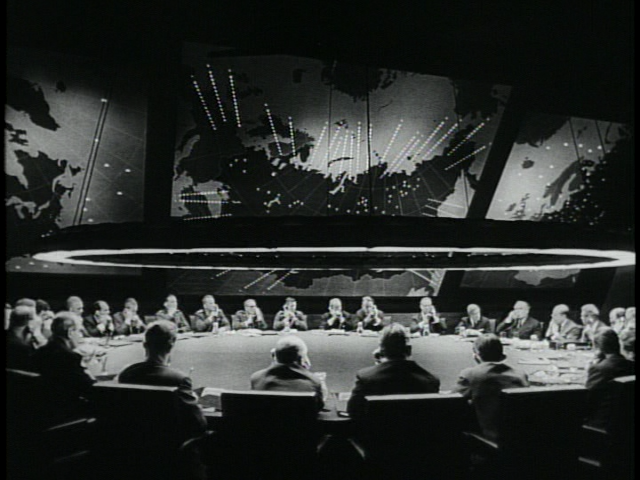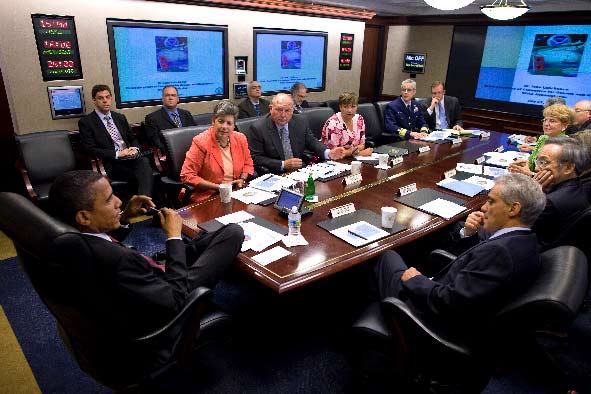Your Next Event Needs Its Own War Room
As we discuss ways to make events extremely personal and give our attendees true experiences that exceed their expectations, it’s hard not to wonder, “What do the actual logistics of something like that that look like?”
That’s where the concept of The War Room comes into play. That’s right – we’re talking about a central command center where all hell can break loose if it needs to. Just like in the movies.
A War Room might be metaphorical at your next event – the name of your emergency game plan, for instance – but we’re suggesting you’ll want to strongly consider an actual room. Choose somewhere out of the way – a utility closet, a hotel room, a conference room in the next building over – where a team of first-responders can work without the distractions of the event floor.
You’ll also want to make sure you’ve limited access to (and knowledge of) the room itself. This is not the place for the CEO – that will only cause major distractions and may entirely derail the whole operation.
Let’s be clear what we’re creating here. A war room exists at your event for the benefit of your participants. It is solely focused on making sure that the product you’re providing them is seamless, meaningful and tailored to their specific needs. A war room is a nerve center that can immediately and efficiently address the needs of your attendees and/or exhibitors, and it has grown out of an ever-growing expectation that events and meetings will be engaging, dynamic experiences.
Let’s take a look at the type of War Room you might want to set up at your next event.

The Dr. Strangelove war room.
The Social Media Command Center
Your event will be social whether you plan for it or not. The fact of the matter is that people talk about their experiences on social media – all of their experiences. Establishing a Social Media Command Center means that you’ve embraced social and taken a proactive role in guiding the conversation, rather than falling victim to it.
Talk to your participants
Conversation tracking can be done as simply as establishing an event hashtag, to as robustly as using detailed visualization software (such as Buzz Radar). The key, however, is staffing people who are primed to respond no matter the circumstances.
Negative social conversation can alert you to a small problem before they become big problems. For example, your attendees are likely to be the ones to tell you first if it’s too cold in the keynote. People may be discussing confusing traffic patterns or a lack of trash cans – all things that can easily be remedied.
But just as important as tracking the negative is responding to the positive. Liking, commenting on, favoriting and retweeting sentiments from your attendees will create a positive feedback loop and encourage more and more of your attendees to join in on the lovefest – and that’s good for you, your brand and your ROI.
Customize your content
Now here’s where you can really take things to the next level. What if the social conversation was not only acknowledged, but started shaping the content of your event? With your Social Media Command Center in place, you have the ability to start dynamically integrating your attendees’ realtime conversations into the event itself.
Knowing what’s being said means that a mainstage presentation can suddenly become interactive with immediate audience feedback – or that you could actually start shaping content on the fly based on what people want to hear about. Let your attendees vote on a session’s topic, or really live on the edge and leave a blank spot in your speaker schedule to develop a day-of session based on hot topics at the event. A the very least, curate the best of your social shares on a large screen in plain view so that people are inspired to join in.

The President’s war room.
The Crisis Management Center
There are going to be mistakes and mess ups. Let’s all just admit that now and move on with figuring out the best way to handle them.
A Crisis Management Center is the most covert of all the War Rooms. Its existence is known to few, and some of your most trusted people are there to make sure that anything that goes wrong is immediately taken care of in a way that draws little to no attention.
A Crisis Management Center will need a direct line of communication with the show floor. (May we suggest the app Voxer?) Once they’ve been linked in to monitoring the most important aspects of the event – time, flow, social, etc. – they should have the authority to make judgement calls as incidents arise.
One of the most powerful responsibilities of the Crisis Management Center will be the ability to actually change the program of your event. It may be as simple as a session time change, but it could be as complex as scheduling a completely new session and alerting attendees of its existence.
For this reason, it’s imperative that the Crisis Management Center have access to updating your event app. By doing so, attendees will always have the most up-to-date information and the team can send push messages as necessary to alert folks of the changes.
The Concierge Center
War Rooms aren’t just for immediate reactions and handling problems – they’re also great for making the experience of your event excellent for everyone involved. A proactive mindset can go a long way towards making sure your participants are receiving the personal, experiential treatment.
Happiness on-demand
One possibility for a Concierge Center would be to create an on-demand service for you exhibitors using your event app. It’s inevitable that someone’s going to forget their charger or need a roll of duct tape. Allow yourself to save the day by being the provider of such things. Create a feedback form within your app where exhibitors can request commonly misplaced or forgotten items.
You could even take a cue from Uber and deliver fun items for a much needed mid-show reprieve. Uber made headlines with its insanely popular kitten delivery and on-demand ice cream. Just imagine the wave of positive feelings that instant chocolate delivery would induce in your exhibitors, all at a relatively low cost to you.
Contests with purpose
Contests are a great way to get people engaging as well. You might try gamifying your event app in order to get people to follow a particular pattern around your show floor. Another option is to gather prizes beforehand that you know you will give away during the event. Then use your Concierge Center to identify certain objectives you would like people to complete and offer prizes for doing so. Use this to bring foot traffic to a dead area or engage with a sponsor that’s not getting enough love. It’s all about flexibility.
Unparalleled experience
The bottom line is that personalized events take resources. It’s going to cost you a little time, money and manpower to pull off any sort of hyper-personal experience. The payoffs in participant happiness and ROI, however, will be well beyond the upfront costs. Consider the War Room structure at your next event and you’ll be looking at unprecedented satisfaction.



